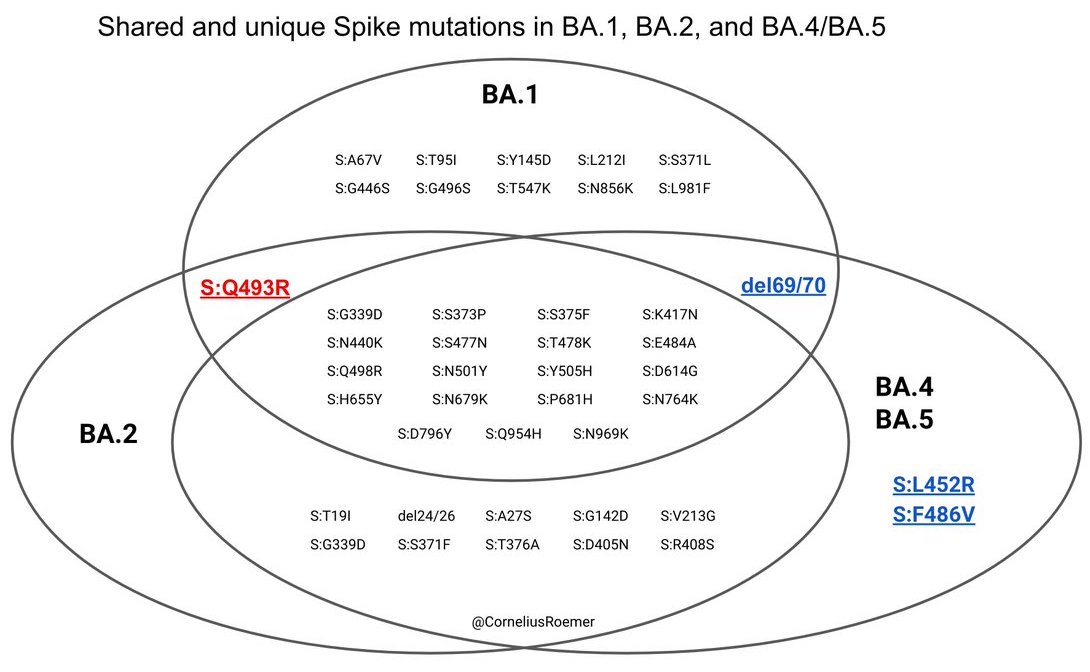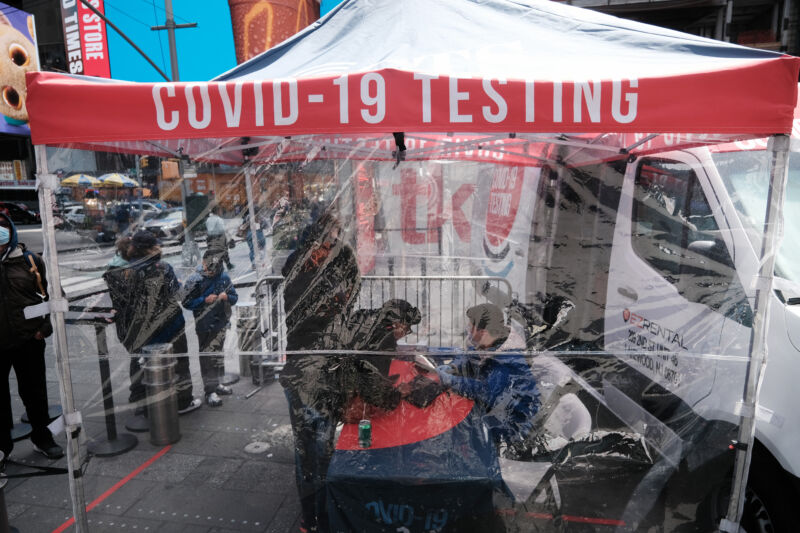Enduring an initial omicron infection may not spare you from omicron's subvariants, according to preliminary data from South Africa.
The country is currently at the start of a new wave of infections, primarily driven by two omicron coronavirus subvariants, BA.4 and BA.5. Despite a towering wave of cases from the initial BA.1 omicron variant in December that infected a large chunk of the country, new omicron cases increased 259 percent in the last two weeks, according to data tracking by The New York Times. Hospitalizations are also up, and deaths have increased by 18 percent.
Preliminary data posted online last week helps explain why cases are once again surging—the BA.4 and BA.5 omicron subvariants can evade neutralizing antibodies generated by infections from BA.1. For the study, led by virologist Alex Sigal of the Africa Health Research Institute, researchers pitted neutralization antibodies from people infected with BA.1 up against BA.4 and BA.5 in a lab. They had samples from 24 unvaccinated people infected with BA.1 and 15 vaccinated people who had also had a BA.1 infection (eight people were vaccinated with the Pfizer/BioNTech vaccine, and seven had the Johnson & Johnson vaccine).
For the unvaccinated people, neutralizing antibody levels were 7.6-fold and 7.5-fold lower against BA.4 and BA.5, respectively, compared with levels against BA.1. In vaccinated people, the drop was shorter: 3.6-fold and 2.6-fold lower against BA.4 and BA.5, respectively.
Ever-evolving
Though the study is small and the data is preliminary, the findings suggest that the latest omicron subvariants can thwart protection generated from earlier omicron versions. Vaccination appears to dull the subvariants' edge, however. Overall neutralization levels against BA.4 and BA.5 were five-fold higher in vaccinated people compared to those who were unvaccinated.
Still, in places where vaccine coverage is low or vaccine protections are waning, BA.4 and BA.5 may have the ability to generate a new wave of cases, as appears to be the current situation in South Africa.
In the US, where vaccination coverage is relatively high, but protection may be waning, BA.4 and BA.5 have only been found circulating at low levels so far. For now, a different subvariant, BA.2, is currently dominating and causing an uptick in cases. BA.2 is similar to BA.4 and BA.5—BA.2 differs from BA.4 and BA.5 by only three mutations and one deletion in the virus' critical spike protein.

But, US experts are most closely watching yet another subvariant, BA.2.12.1, which has a similar mutation profile as BA.2, but has two additional mutations. One of the mutations in BA.2.12.1 is in the same spot as a unique mutation in BA.4 and BA.5—amino acid position 452.
While BA.2 is still the dominant variant in the US, BA.2.12.1 is quickly gaining ground. Currently, BA.2 accounts for an estimated 68 percent of SARS-CoV-2 cases in the US, and BA.2.12.1 accounts for an estimated 29 percent, according to the Centers for Disease Control and Prevention.



3175x175(CURRENT).thumb.jpg.b05acc060982b36f5891ba728e6d953c.jpg)

Recommended Comments
Join the conversation
You can post now and register later. If you have an account, sign in now to post with your account.
Note: Your post will require moderator approval before it will be visible.